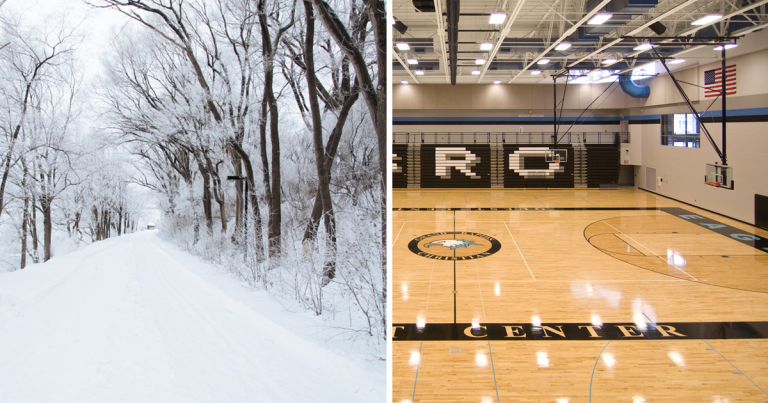Walk outside on a cold winter day just after the first big snowfall and you can hear the hush in the air. Everything sounds different because that hush in the air is the snow absorbing sound. Now, compare that to walking into a gym where the sound bounces around and lingers in the room.
When sound hits a material, three things can happen. First, the sound can be reflected; like in the gymnasium where it bounces off the hard walls and is redirected. Second, some of the sound can be transmitted through lightweight materials, like thin office walls. Finally, the sound can be absorbed. What happens to the sound when it is absorbed? It gets trapped in the material and converted into an extremely small amount of heat. Don’t count on it as a replacement for your heating system.
Materials that absorb sound are porous, like the snow. The air gets trapped in between the little snow crystals (or fibers in other materials) and turned into heat. One of the most common materials used to absorb sound is fiberglass. Closed-cell spray foam, on the other hand, acts as a good thermal insulator, but is a very poor acoustical absorber.
Just as not all materials are porous enough to absorb sound, not all materials absorb sound in the same way. Acoustical absorption is frequency dependent. That means two materials may look the same, but one might absorb high frequencies or high pitch sounds, and another may absorb mid or low frequencies. Typically, as the thickness of the material increases, so will the absorption of low frequency sound.
At ABD Engineering & Design, it’s our job to engineer acoustical solutions that control how the sound is reflected, transmitted, or absorbed based on the type of space. If maximum absorption were the goal, we’d treat every project like a movie theater or even like an anechoic chamber. But in the real world, different spaces have different acoustical needs, and our job is to develop acoustical solutions that are custom fit to meet those needs.

Our club house is 36 ft. X 40 ft. 9ft.high. What sq ft. of sound board will we need?
Thank You, William
William,
Figuring that out is exactly what we do!
In order to determine the acoustical treatments necessary to achieve a desired result, we would need to collect a few pieces of information. While the size (volume) of the room is one factor, the materials are another. We would also meet with you to talk about your desired results. Then, we would perform acoustical measurements in the space, and provide a report that would tell you how many square feet of which types of treatment to use, along with their placement, and descriptions of alternates.
Please give us a call or send an email, and we will be happy to provide a proposal for your project.
http://www.acousticsbydesign.com/acoustical-consulting/contact-us.htm